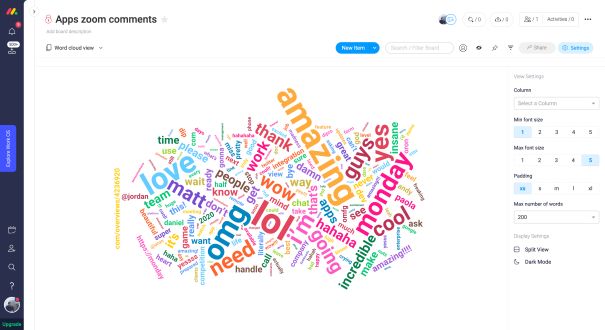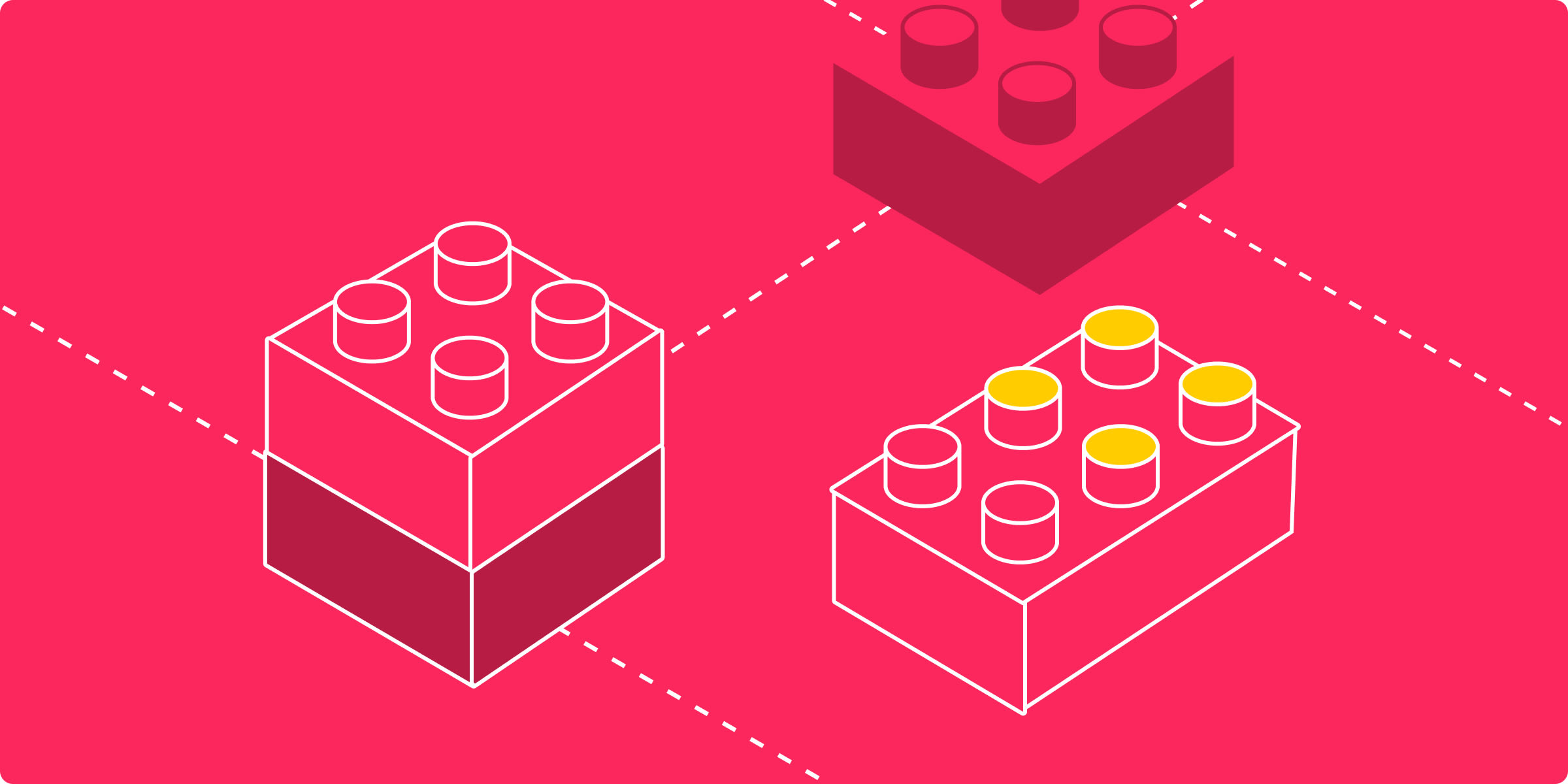
Did you know the average employee uses 8 work apps each day? They likely use different tools for collaboration, time logging, social media, accounts… you get the drift.
What if you didn’t buy any of these additional apps and simply built your own solutions? This doesn’t exactly sound like the solution for saving time, does it?
That’s what no-code software is for. It allows anyone on your team, not just software engineers, to create a fully functional work apps to meet their specific needs without the need to write code.
In this piece, we’ll walk you through how you can use no-code and low code to quickly build work apps and improve business processes.
What are no-code and low-code?
No-code and low-code refer to software development that requires little to no prior knowledge of coding. It allows non-tech-savvy users to create full-fledged applications using drag and drop user interfaces, reusable components, and building blocks—all without the extensive learning to code that is usually required.
If you’ve ever built a WordPress website or launched a Shopify store, you’ve already dipped your toes into no-code. Other use cases for no-code include building a chatbot, voice app, newsletter, online community, magazine, and more.
Let’s focus on using no-code tools for developing enterprise apps for work.
The global low-code development platform market is predicted to bring revenues of $187.0 billion by 2030, rising from $10.3 billion in 2019. It’s expected to grow at a CAGR of 31.1% during this period (2020–2030).
The beauty of no-code development platforms lies in their accessibility. They allow all teams — HR, marketing, sales, and finance—to build workflows and processes to boost efficiency.For instance, sales teams may use it to build a sales lead management system with automated email, marketing teams may use it for lead generation, while HR may use it for applicant tracking or other finance CRM needs, like payroll.
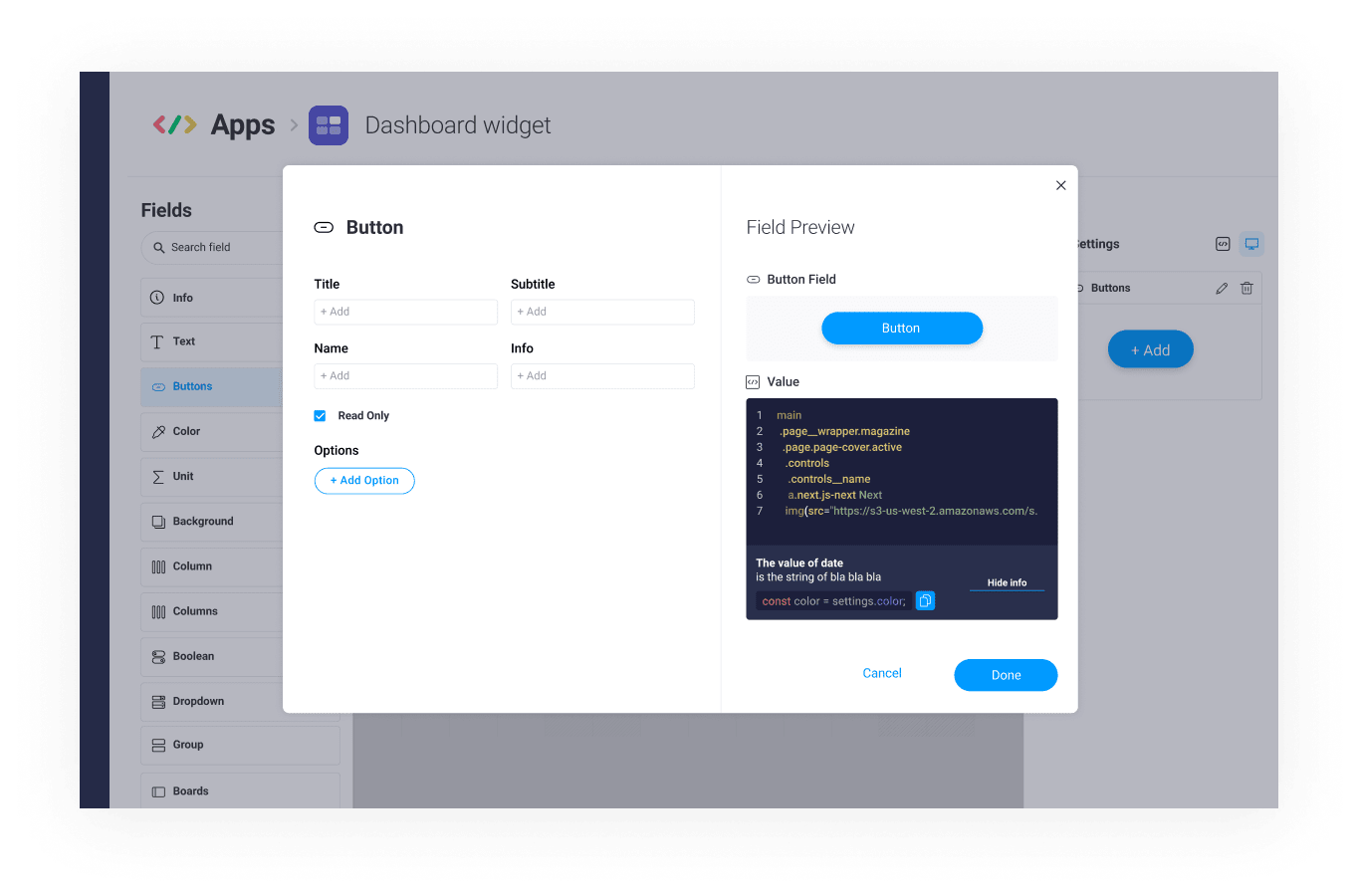
Apart from specific workflows, no-code also allows teams to build virtually any app that may improve their workflow. For instance, the monday.com team built a virtual whiteboard for brainstorming using the monday.com Apps Framework.
4 ways no code improves internal tools and processes
A no-code tool helps you streamline work processes without overloading your IT team or making a dent in your pocket in several ways.
Optimize use of IT resources
One report found digital automation platforms reduce development time by 50-90% as compared to using a programming language, while another stated that no-code development is ten times faster.
Additionally, when more teams can independently build apps for their specific needs, it takes the pressure off your IT team and allows them to focus on more complex development projects and advanced features.
Reduce costs
The average company spent $343,000 on SaaS in 2018, which was a 78% increase from the previous year.
Thanks to specialization, companies don’t mind spending big bucks on sales, business operations, engineering, and HR software and mobile apps.
Each new software comes with additional training and onboarding costs, plus it drains employee time. Without adequate training, most employees feel lost while using a software.
It’s also likely that a new department chief or VP has their own favorite work tools, and the training drill for teams begins again.
Offer flexibility
Companies are changing apps faster than tech employees switch jobs, per one report. The average company changed 39% of work apps between 2017-2018.
Why? Because, among other limitations of off-the-shelf software, its biggest drawback is it requires you to change your work processes to fit it’s feature set.
For example, Entrepreneur.com failed to find a single app that could help them track sales by rep, location, months, years, agency, brand, and so on.
Luckily, they stumbled on monday.com’s Work OS platform and found its building blocks to offer just the right amount of flexibility.
Is flexibility code for vulnerability too? Will you be staring at a data security breach down the line?
Even though anyone can develop apps in a no-code environment, your IT team has complete control over governance and compliance, so you’re not vulnerable in any way.
Helps teams validate ideas
Your team has a ton of ideas — for product features, marketing campaigns, streamlining processes… Until now, they had no way of bringing these to life or testing their hypothesis without dumping requests on IT.
But today, as Ryan Hoover, founder of Product Hunt, says, “It’s no longer limited to the <1% of engineers that can code, resulting in an explosion of ideas from all kinds of people.”
With a low-code or no-code platform, more of your employees’ ideas can see the light of day.
They can use tools for prototyping, wireframing, and building workflow apps, to validate their hunches, and then get IT to work on a full-fledged solution.
Meet monday.com Apps Framework, a low-code platform to help you build smart work apps
Now that you understand the importance of low code, let’s get to the fun part: how do you actually use a no-code development platform to build apps?
We’ll use the monday.com Apps Framework as an example in this section to help you better understand the no-code development environment.
What is the monday.com Apps Framework?
The monday.com Apps Framework allows teams to create custom blocks and workflows. This includes integrations, automations, data visualizations, and dashboard widgets with minimal coding, in a fraction of the time that traditional application development takes.
Developers and non-developers can build on top of the monday.com platform, irrespective of any other programming language they already use. In addition to this aspect of the platform’s no-code, automation enhances several processes within a workflow.
For example, customers of JT’s Cloud wanted a way to automatically transfer their working hours — which were tracked in monday.com — to Xero, an accounting software.
To meet this need, the team built a connector between monday.com and Xero using the Apps Framework to build an integration in a matter of two days.
Similarly, any team can build apps to simplify any type of process with monday.com Apps. Think onboarding, CRM, social media management, invoicing, accounting, and so on.
What can you build with the monday.com Apps Framework?
SaaS tools for all teams
These could range from complex solutions like a customer service tool and a monthly budget tracker, to simple work apps such as an online reader for all types of documents.
The monday.com Work OS platform allows teams to use boards, forms, columns, automations, visualizations, and integrations of various kinds. The result is a robust SaaS platform that could easily rival its existing peers.
Here’s how a sales team might build a sales lead manager in monday.com.
To capture leads, they could use Forms.
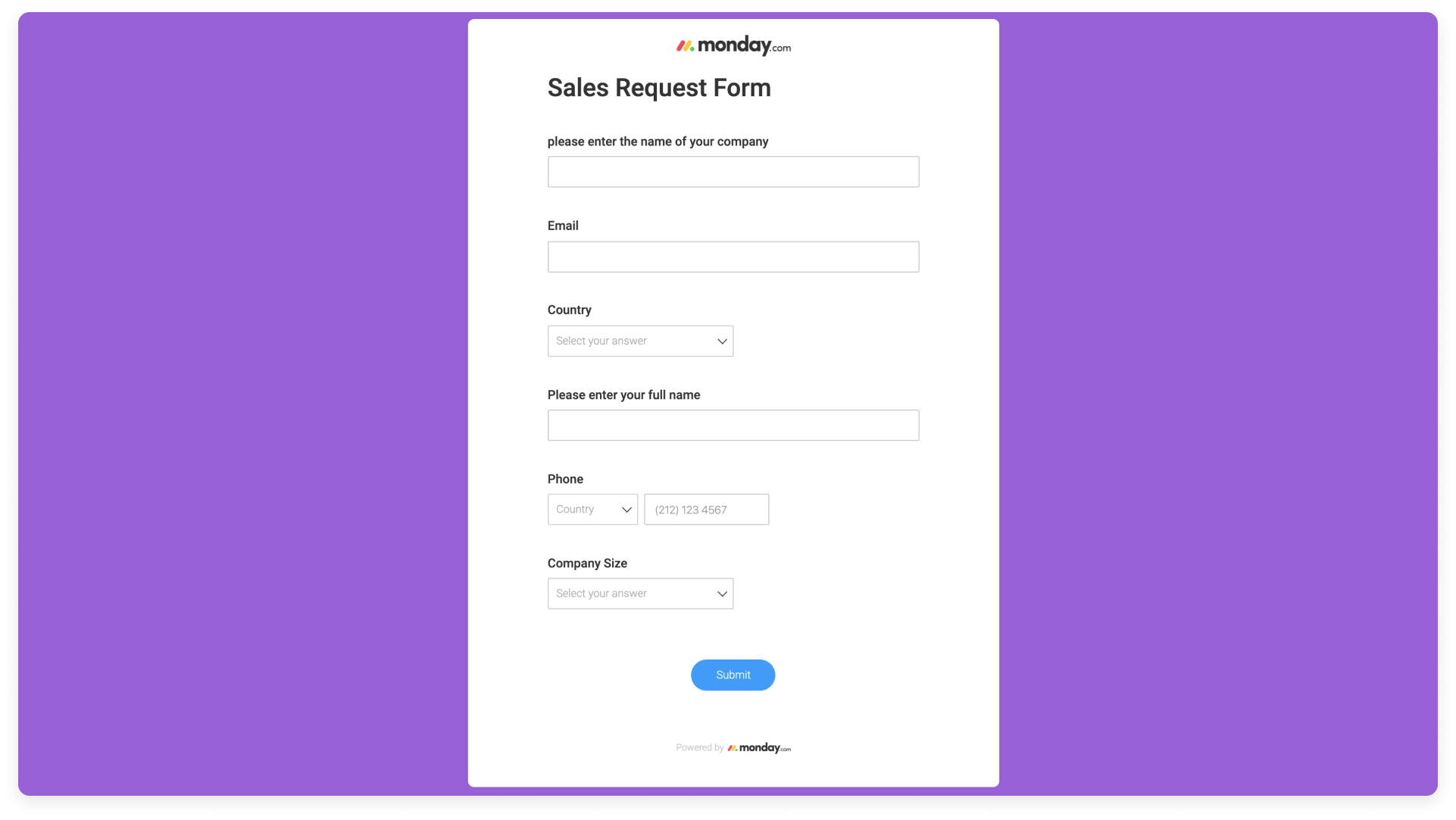
These leads are automatically stored on a monday.com board. They can be tracked at different stages as prospects, in progress, closed-lost, and closed-won.

Using automations, teams can put lead nurture programs on auto-pilot.
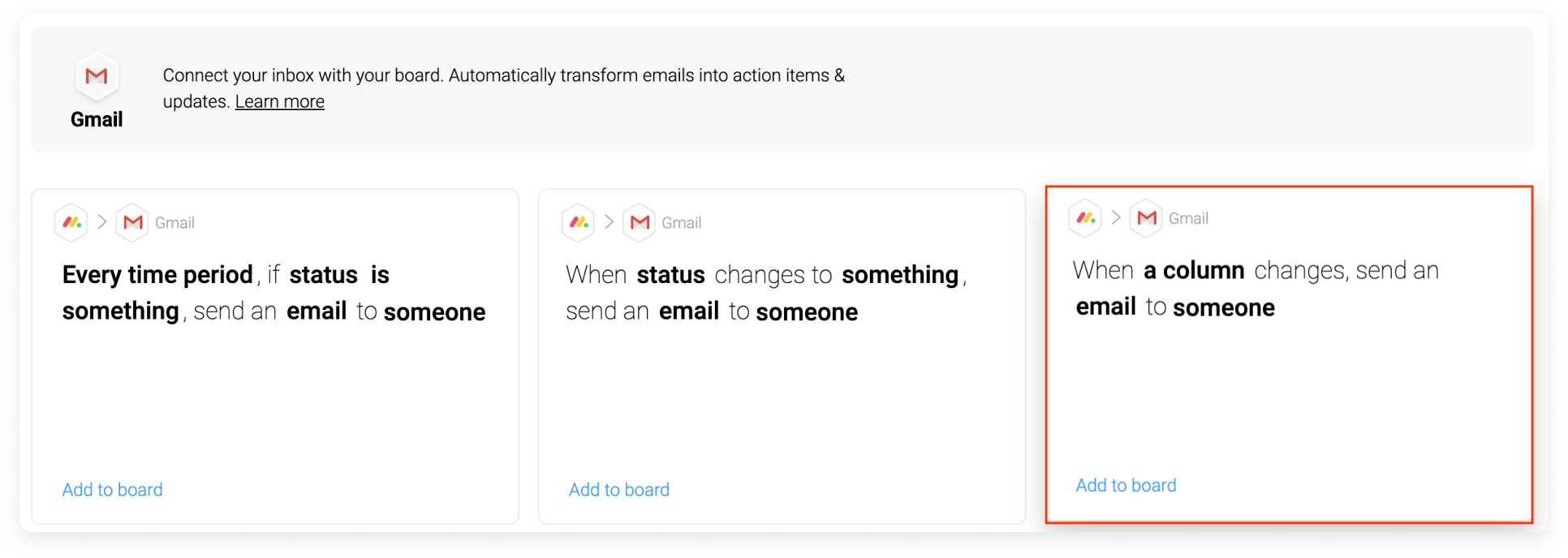
Plus, a myriad of integrations help them enrich customer data.
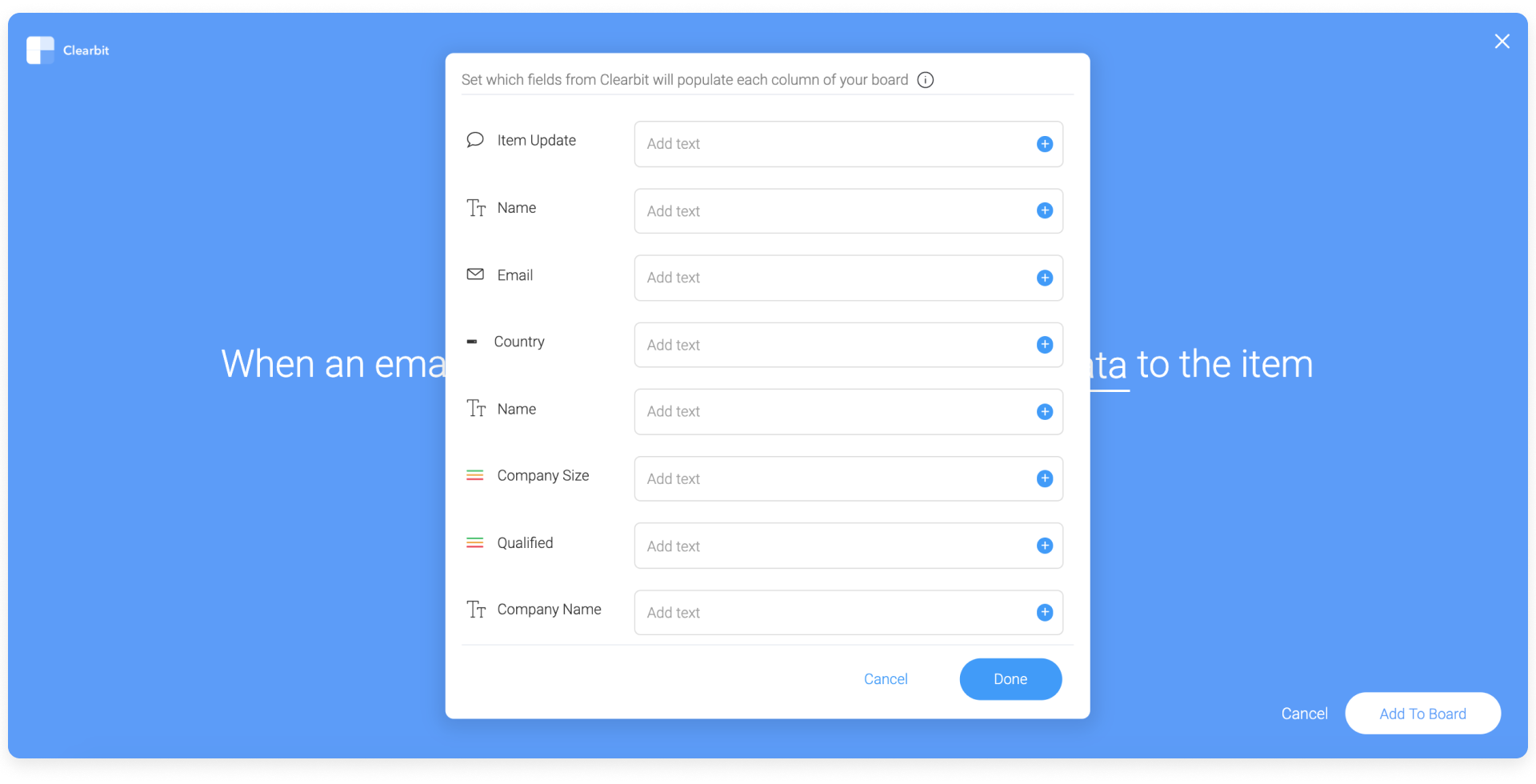
You can imagine how different teams may use these components to build different solutions. For inspiration, here’s a product roadmap and recruitment tracking template on monday.com.
Forms
Forms are the gateway to collect all-important data from your customers and team.
Internally, you can create monday.com forms to track spending, KPIs, deliverables, and collect feedback.
Externally, you may use them to collect information from prospects, customer service requests, and run surveys.
The best part about collecting information with monday.com forms is your data is automatically transferred to a monday.com board where you can track, tweak, and analyze it.
This is what creating a form on monday.com looks like.
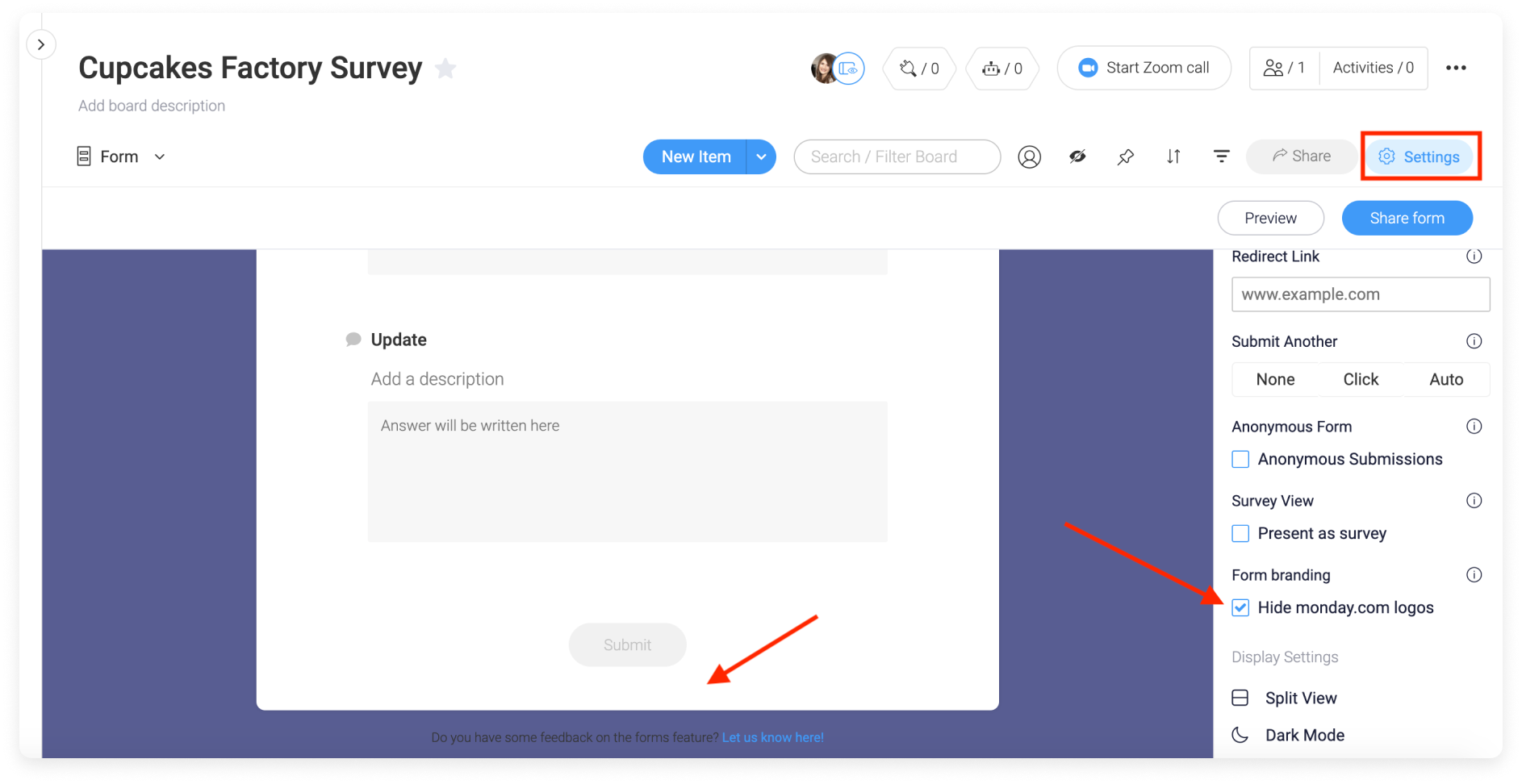
Automations
Automations in monday.com help you put literally any process on auto-pilot.
Need to send a confirmation SMS to your customers? Want customer support reps to receive new request notifications? Wish your HR team could send automatic follow-ups to candidates? Consider it done, all without a single line of code.
All you’ll need to do is set up a few simple “if” and “then” rules on your monday.com board, and you’re set.
It’s as simple as logging into your email but as powerful as having a 2nd brain tackle every tedious manual process.
Here’s a quick look at how automations work on monday.com.
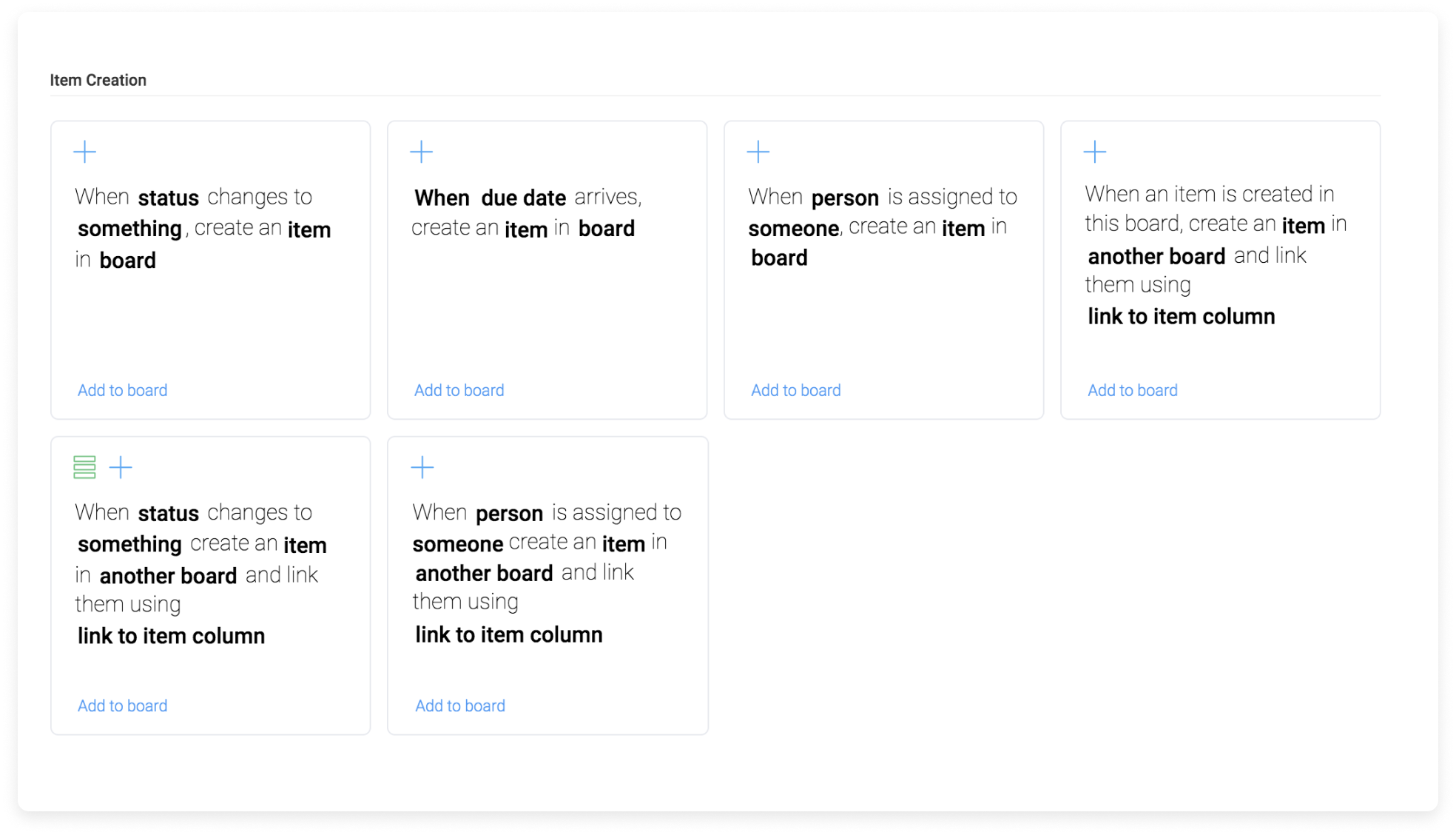
And here’s an example of automations for a customer service team.
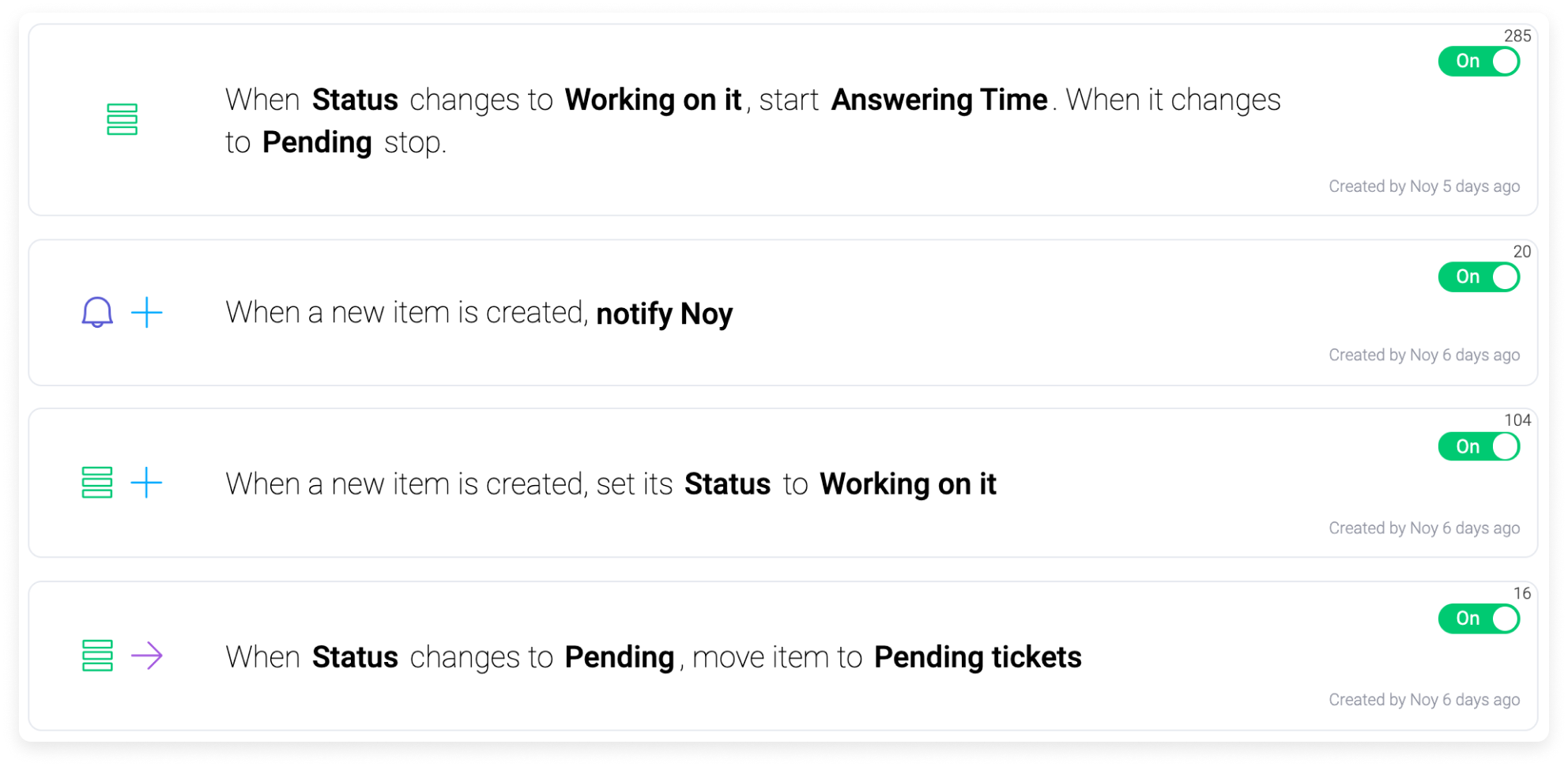
Integrations
These allow you to bring your existing data into monday.com, so you don’t have to keep switching apps.
monday.com integrates with more than 50 work apps such as Google Sheets, Microsoft apps, Mailchimp, Dropbox, Slack, and Zoom.
But with the monday.com Apps Framework, it’s possible to build any integration to monday.com that you need.
Here’s a quick guide to getting started with building integrations on monday.com.
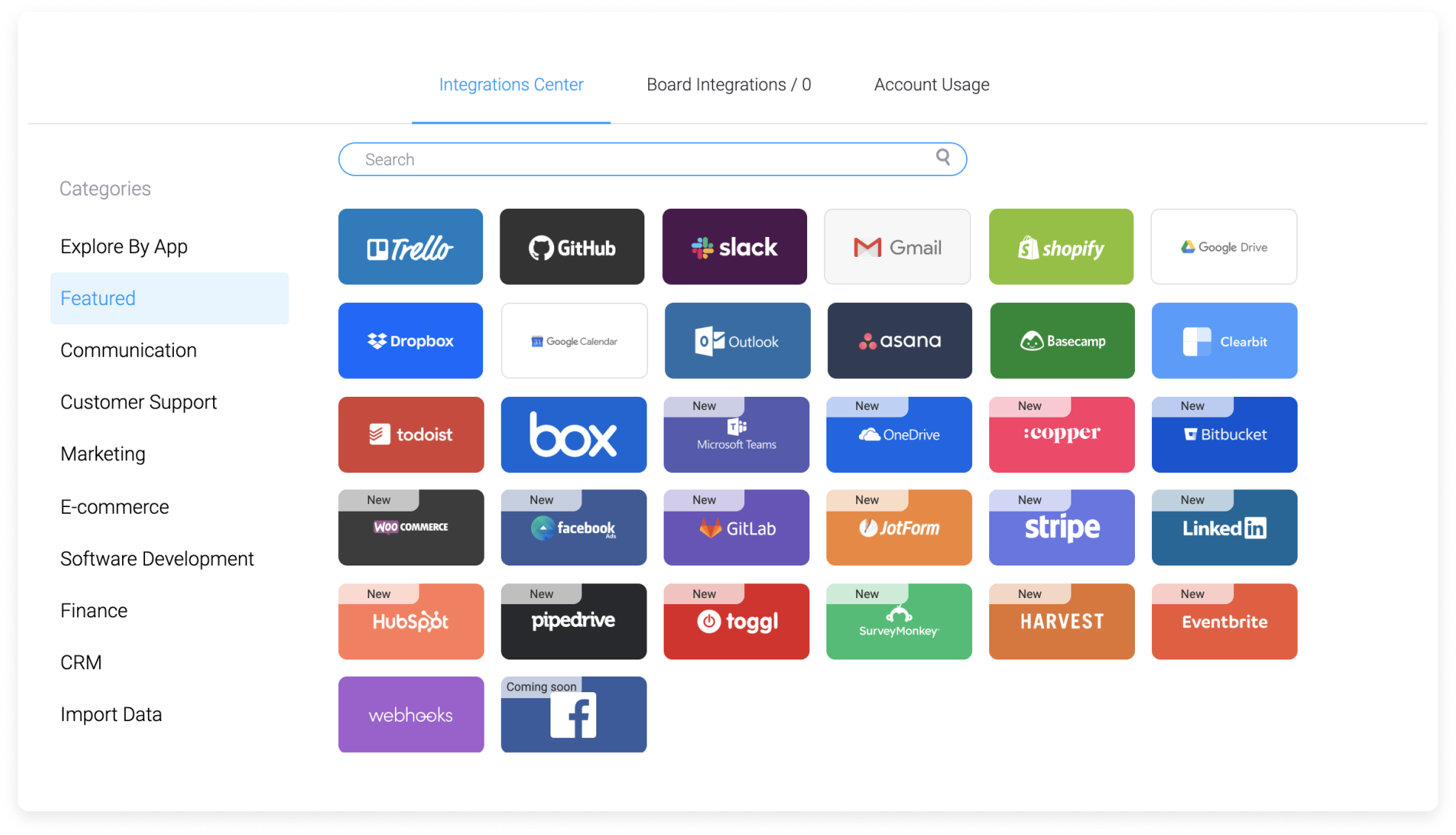
Dashboard widgets
Think data visualizations like timelines, surveys, charts, maps, calendars, and more.
You can create different types of dashboards to view the big picture like quarterly goals, biannual attendance, and growth, as well as granular details like each employee’s workload and cost of acquiring a small business customer.
Here’s a list of ways you can visualize your data on monday.com.
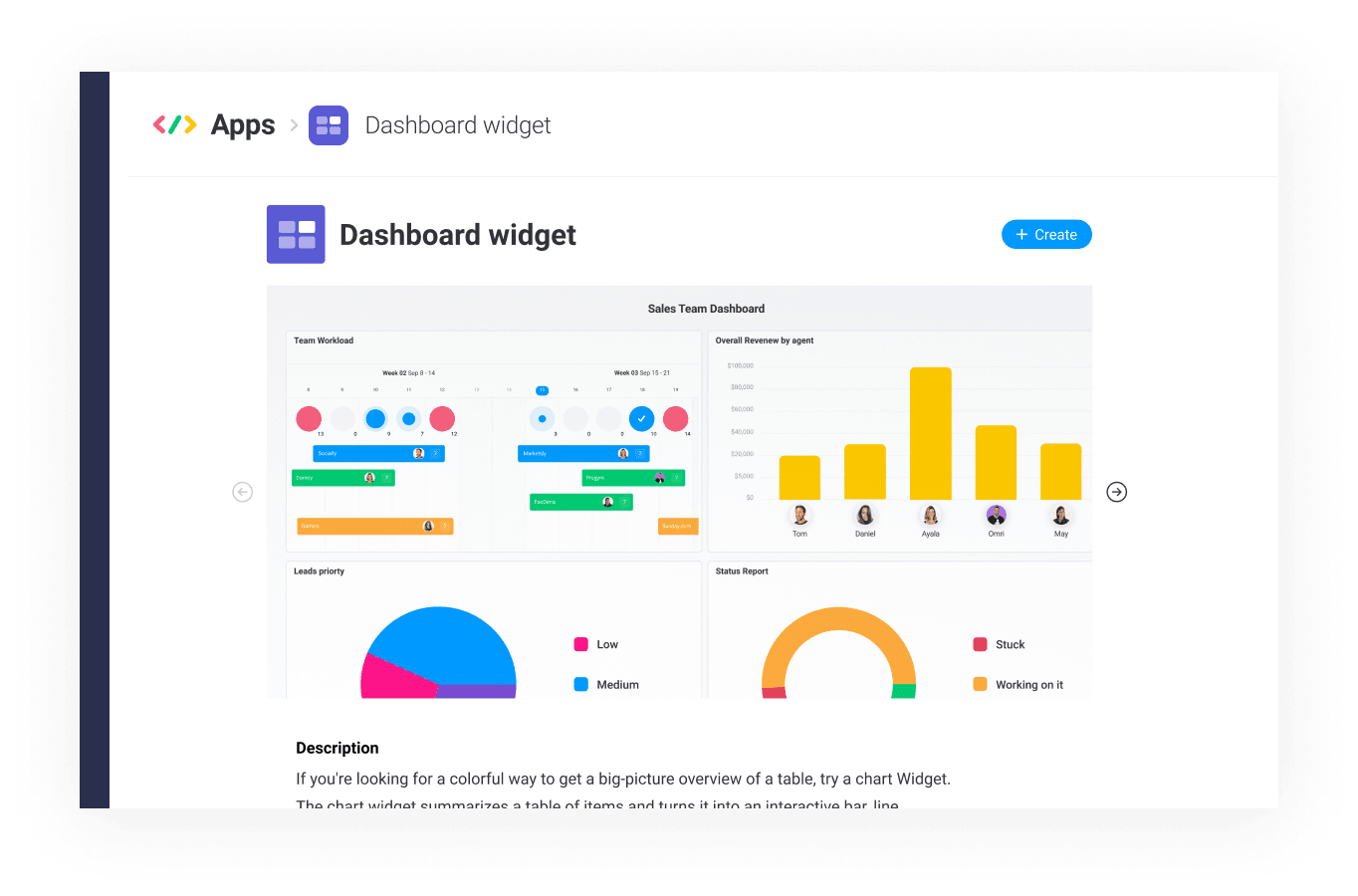
3 examples of monday.com Apps built with low code
We’ve gone over the capabilities of the monday.com Apps Framework, but here are three apps our team built using it.
Word Cloud Creator
As the name suggests, the app allows you to create a word cloud from literally any data.
Let’s say you’re hosting a Zoom chat to get your team’s opinion on a redesign, or you’ve wrapped up a customer demo.
Simply upload each of their chats to the Word Cloud Creator, and you’ll get a word cloud with the most relevant topics discussed. It helps you quickly get a sense of trends and opinions to pay attention to.
Image Annotations
This tool allows you to directly add comments on any image in monday.com.
No more unnecessary back-and-forth, just quick feedback when you need it. It’s as simple as collaborating on a Google Doc.
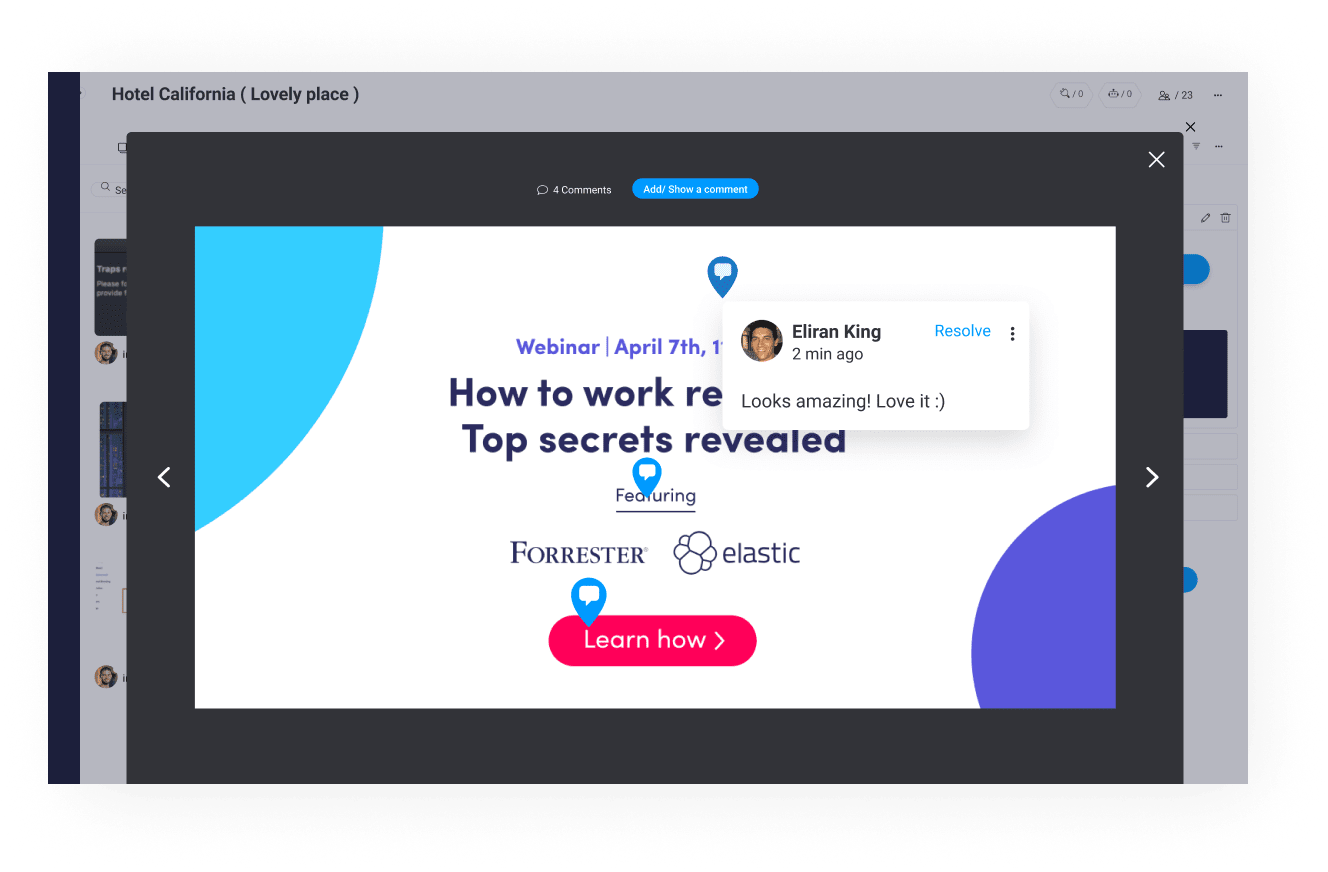
Collaborative whiteboard
This one is especially helpful for remote teams who wish to brainstorm in real-time. It’s also helpful if you like drawing flowcharts or product mockups during meetings.
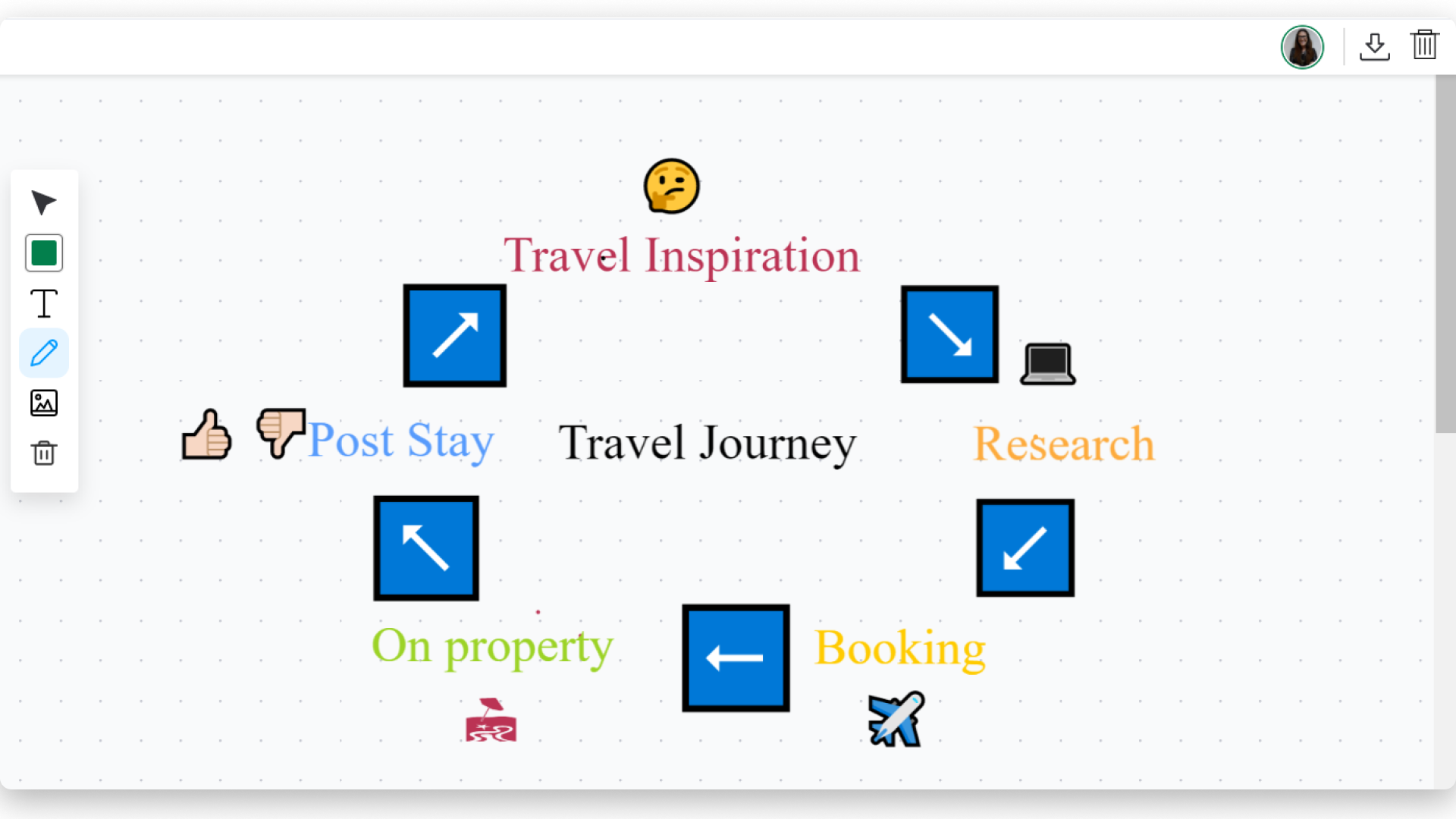
Success story: KPMG’s Smart Reader Integration with monday.com
Let’s take a look at how KPMG helped their clients streamline the expense reporting process with the help of the monday.com Apps Framework.
Operating in a fairly traditional market, KPMG’s customers used obsolete systems and methods to manage accounts.
One such example was the way they calculated personal expenses of employees. They’d sort through physical receipts to calculate the total expenses per month.
To digitize the process, KPMG built a Smart Document Reader that could extract data from any document in any language.
There was still something missing though: their customers needed a better way to capture and analyze expense data.
Thus, they decided to connect their Smart Document Reader to monday.com’s Work OS.
Here’s how it works: their customers use the Smart Document Reader to extract data from receipts. Once they upload it to monday.com, it’s automatically entered into relevant columns such as name of expense, amount, date, and so on.
From here, they can use monday.com’s data analytics powers to view their expenses in several ways — weekly expenses, expenses on specific services like taxis and restaurants, expenses per employee, and so on.
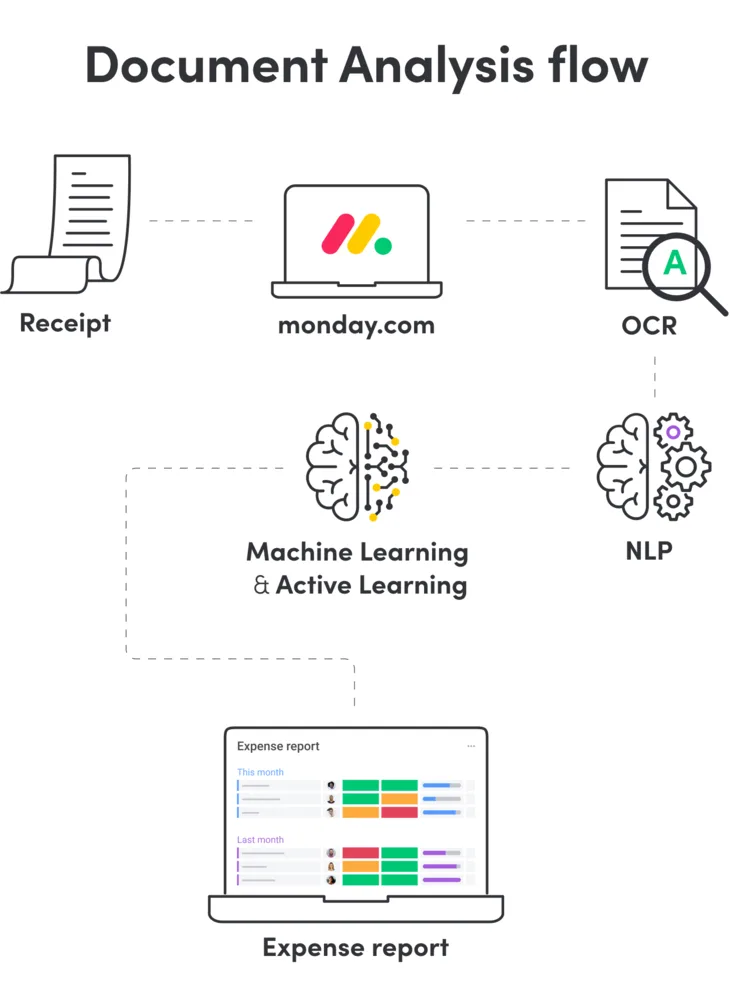
The integration also helps them extract and peruse data from documents like invoices, bills, and more.
Overall, the integration has helped KPMG’s clients streamline data collection and analysis.
Here are 2 quick guides on building widgets and integrations like this on monday.com to help you get started.
Every team can improve their workflow with monday.com
If you’re like most teams, you know your IT department could use a break from never ending app development requests. On the other hand, off-the-shelf software is an expensive and inflexible option.
The best solution then, is to have each of your teams embrace no-code development tools and build their own work apps that will suit your company’s needs.
The monday.com Apps Framework is a simple low-code development platform that helps teams like sales, marketing, HR, and finance easily build custom apps, workflows, automations, and integrations.
It also allows professional developers to reduce their development time and quickly roll out solutions for their clients.
If you’d like to give no-code/ low-code and monday.com Apps a try, sign up for a Developer account here.
 Get started
Get started 

